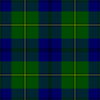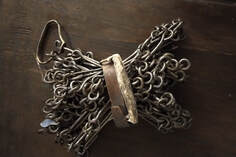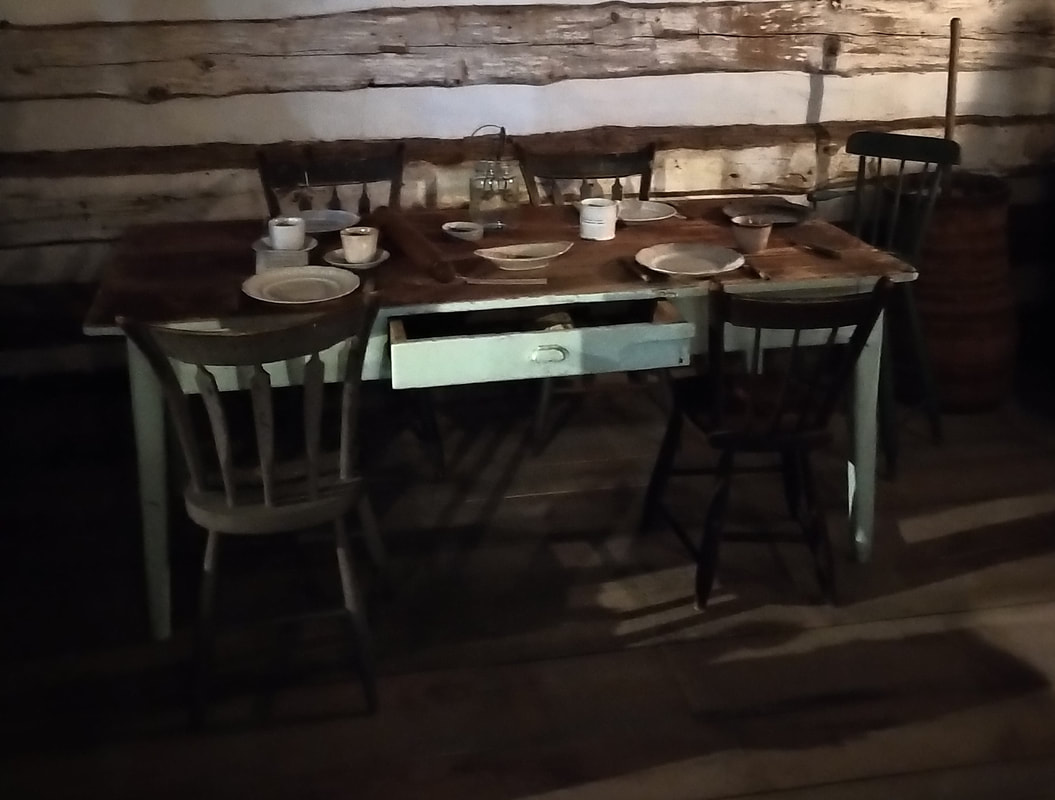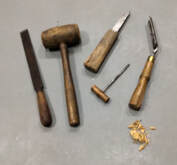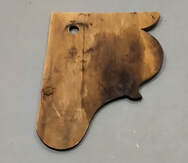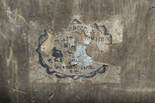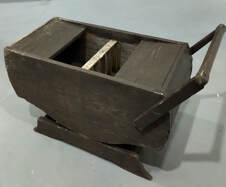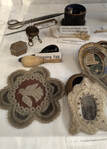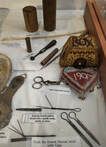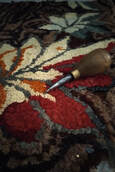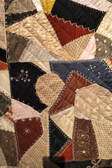We need you to put on your thinking caps to solve these historic questions! Can YOU find the answers? Be a Settler Sleuth and search out the answers.
For help, read the books in our Pioneer Bookshelf, go online or ask your family to figure out these Settler Sleuth questions.
For help, read the books in our Pioneer Bookshelf, go online or ask your family to figure out these Settler Sleuth questions.
Boats and Water
The earliest European settlers to Canada had only one way of crossing the ocean and that was sailing! Water was very important to the settlers who came to Canada. It was their main way of transportation since few roads had been made.
How did the settlers travel from Scotland, Ireland and England to Canada? Find a picture of the boats the settlers used to cross the ocean.
What kind of boats did the settlers use to travel in Canada? They even made their own boats. What did these boats look like? How did the settlers make these boats? What material did they use?
Space on ships was very small. What would a settler bring with them? What would you take if you were starting over again in a new country? Ask your parents, siblings, and friends what they would take. Their answers might surprise you!
How did the settlers travel from Scotland, Ireland and England to Canada? Find a picture of the boats the settlers used to cross the ocean.
What kind of boats did the settlers use to travel in Canada? They even made their own boats. What did these boats look like? How did the settlers make these boats? What material did they use?
Space on ships was very small. What would a settler bring with them? What would you take if you were starting over again in a new country? Ask your parents, siblings, and friends what they would take. Their answers might surprise you!
Keeping Warm
Living in Canada can be cold! How did the settlers stay warm?
Most of the settlers who travelled to Lanark County in 1820 had been weavers in Scotland making blankets and clothes from wool. They brought weaving tools with them to Canada. Many settlers had spinning wheels in their cabins. The families waited months for a travelling weaver to visit their cabin with his loom. He would set it up in their home for a few days. Then he would take it apart and move to their neighbour's home. Where does wool come from? What other material could settlers wear to stay warm? What did the looms of the early settlers looked like and how they were used?
Here's a link to an early loom demonstration in Virginia, USA
Most of the settlers who travelled to Lanark County in 1820 had been weavers in Scotland making blankets and clothes from wool. They brought weaving tools with them to Canada. Many settlers had spinning wheels in their cabins. The families waited months for a travelling weaver to visit their cabin with his loom. He would set it up in their home for a few days. Then he would take it apart and move to their neighbour's home. Where does wool come from? What other material could settlers wear to stay warm? What did the looms of the early settlers looked like and how they were used?
Here's a link to an early loom demonstration in Virginia, USA
Music & Entertainment
One of the most prized possessions the settlers had was a fiddle. It was the centre of entertainment for their families and neighbours. The settlers danced and sang on the ship during the long journey across the ocean in 1820. The fiddle was played at community gatherings when the settlers arrived in the Lanark area in Canada. Can you think of why they would bring a fiddle instead of other instruments like a piano? Find out what happened at Fiddler's Hill in Dalhousie Township in 1820. Fiddler's Hill
Money and Wages in Scotland
In early 1820, people in Scotland who made their living as weavers began to earn lower and lower wages at the mills where they worked. Wages went from twenty-five shillings to five and a half shillings. Find out how much a shilling would be worth today. Time for some math. How many pennies would be equal to a shilling? How many shillings were in a pound? Why did they use the word pound to describe the amount of money? Soon many weavers lost their jobs and decided to leave Scotland.
Look at a map of Scotland and find Glasgow. Old maps online
Find the seaport Greenock on the map. That is the port where the settlers boarded the ships to leave Scotland.
Look at a map of Scotland and find Glasgow. Old maps online
Find the seaport Greenock on the map. That is the port where the settlers boarded the ships to leave Scotland.
Packing Your Bags
When settlers traveled, they packed their belongings in travel trunks, satchels and cloth bags. There wasn't much space to pack all the things they had so many things had to be left behind. Some trunks were about 32 inches long and 18 inches wide (80 cm by 43 cm). Measure a space that would be about the same size as a trunk and see if you can fit all the most important things you would need to take with you if you moved to a new place. What would you decide to take? Would you pack books, toys, pictures, dishes and clothes like the settlers did? What else would you pack?
Family Heirlooms
When the settlers packed their belongings into trunks to cross the ocean, they included some important items that would help them remember their homeland. Many of these things have survived for centuries by being passed down through the generations of families. These items are often called heirlooms. Look around your home to see if there are any things that have come from your grandparents. Ask your grandparents if they have things that have been in your family for a long, long time. Common items that are passed through families include jewelry, books, clothes, quilts, musical instruments, photographs and art. Research your family heirloom to find out where it came from originally. Who owned the item first? What do you think will happen to your family heirloom in the future?
There's a story of a Camelon family heirloom brought from Johnstone, Scotland to Lanark County in 1841. The Camelon oil lamp was passed down through the family for many generations, each time, being given to an heir that had the name of William. It now can be found at the Middleville and District Museum.
There's a story of a Camelon family heirloom brought from Johnstone, Scotland to Lanark County in 1841. The Camelon oil lamp was passed down through the family for many generations, each time, being given to an heir that had the name of William. It now can be found at the Middleville and District Museum.
Scottish Symbols
Find out about important symbols of Scotland. Scotland had many clans. Clan is another word used for family in the Gaelic language that was spoken in parts of Scotland. Most clans had their own coat of arms and motto. What would you include in a coat of arms for your family? What would be your family motto? Weavers in Scotland developed a pattern called tartan. A tartan is a pattern that has several colours that cross each other vertically (up and down) and horizontally (side to side). Check your closet to see if you have something with that pattern. Today, we call these patterns plaid. Someone in your family probably has a plaid shirt. The word plaid comes from the the Gaelic word plaide that means blanket. Scottish people wore plaides to keep warm. Scottish clans created their own tartan patterns for the plaides they wore. What colours would you use to create a tartan of your own?
On the Ship
The living conditions on the ships that crossed the ocean in the early 1800's could be challenging for those on board. The passengers would need enough food and water for two months on the ship. In Scotland, there were stories told of rotting food and contaminated water on board the ships. How could the government talk settlers into making the trip to the new land? In 1815, settlers were promised enough food and water and a free trip. They were also promised land and supplies when they got to Canada. Find out what they might have eaten on the ships and what they were given when they reached Lanark. Design a poster to persuade settlers to sign up for the voyage to Canada. Include pictures of what they would receive for tools. Make a menu for what they would eat.
Games and Toys
Children who came to Canada in the early 1800's had few toys, but the ones they had were very special to them. Their toys were made of materials that were easy to find and were often the leftover scraps when their parents had made something needed by the family. The toys were usually made from wood, fabric or yarn. Girls would play with dolls made from material and boys would whittle whistles from left over pieces of wood. Children also used everyday items to play games with each other. Find out how to play 'Rolling the hoop', 'Jack Straws', 'Drop the Handkerchief', 'Hot and Cold' and 'Who has the Button?' Some games that children played long ago are still played today like hopscotch, tag and hide-and-go-seek.
School on a Ship
Settler children were expected to continue their schooling on the ship crossing the ocean in the 1800's. If there happened to be a teacher on board, he could be paid a small fee to conduct formal lessons. Usually, the families were left to keep up their children's learning. The families had packed books for this purpose and time was spent each day reading and writing. Diaries and letters were used to keep up writing skills. Children also read books of knowledge to learn history and geography, The bible was used to teach children bible stories for moral education. Hymn books could be used to practice reading while learning songs to be sung at Sunday services held by a clergyman on board or the Captain of the ship each week. The Edinburgh Almanack was a series brought to the new land by settlers. Seventeen volumes of this publication were found in the Dalhousie library built in 1829 and stocked by the settlers in the area of Watson's Corners.
An almanac has information about weather, moon phases and tides. Find out what the weather predictions are for this year in the almanac. Today, almanacs are sold with other magazines or can be found online. Look for information in your region.
Almanac on line
An almanac has information about weather, moon phases and tides. Find out what the weather predictions are for this year in the almanac. Today, almanacs are sold with other magazines or can be found online. Look for information in your region.
Almanac on line
Weather at Sea
The settlers were told to pack clothing for both warm and chilly weather on their voyage. Theshipslist.com gives us temperature readings for several weeks of ship crossings in the spring and summer of 1820. The temperatures ranges from a low of 52 degrees fahrenheit to a high of 74 degrees fahrenheit. In Canada, we now use Celsius to record temperature. The temperature range for the settlers would have been from about 11 degrees Celsius to 23 degrees Celsius. What would you wear if the temperature was 11 degrees Celsius? What would you wear if the temperature was 23 degrees Celsius? Draw pictures of what you would wear at 11 C degrees and 23 C degrees.
Check out The Ship's List for information about the journey of the settlers.
Check out The Ship's List for information about the journey of the settlers.
Ocean Navigation: Staying the Course
Captains of ships used landmarks along with the sun, moon and stars to navigate at sea in the early days of travel. When voyages across the Atlantic Ocean started to happen more regularly, they needed more sophisticated tools to help them stay on course. When the settlers were emigrating in the 1800's, the ships used a compass and an instrument called a sextant that could measure the angle of an object above the horizon. The sextant has a telescope attached to it. Navigators could figure out their position by measuring the height of stars above the horizon. A nautical almanac describes the overhead positions of the stars, moon and sun each hour of the year. A sea captain could figure out the position of the ship by taking a measurement of the position of a star in the sky and the time of day. He would use the nautical almanac to calculate the ship's location. Polaris, also called The North Star, could be seen by ships in the North Atlantic Ocean. Polaris is located at the end of The Little Dipper's handle. Locate The Little Dipper in the sky at night to see if you can recognize Polaris. It is the brightest star in the constellation. Now see if you can find The Big Dipper, Cassiopeia and Orion. Need help? Check out '5 constellations everyone can find' at eurekacamping.com for tips on locating the constellations that sailors use to navigate.
Ports of Entry
Settlers arrived at many ports along Canada's eastern coastline in the early 1800's.
Some of these were:
St. John's, Newfoundland
Pictou and Halifax, Nova Scotia
Charlottetown, Prince Edward Island
Island of Cape Breton
Saint John, New Brunswick
Quebec and Montreal, Quebec
Ships often docked at Quebec and Montreal in the summer months and at St. John's, Nfld and Halifax in the winter. Can you figure out the reason why they would make this decision? Hint: it had something to do with the weather and locations. Find a map of the East Coast of Canada in the 1800's and compare it to a map of that area today. Can you find the ports in both maps? What has changed?
A good place to start is at www.oldmapsonline.org
Some of these were:
St. John's, Newfoundland
Pictou and Halifax, Nova Scotia
Charlottetown, Prince Edward Island
Island of Cape Breton
Saint John, New Brunswick
Quebec and Montreal, Quebec
Ships often docked at Quebec and Montreal in the summer months and at St. John's, Nfld and Halifax in the winter. Can you figure out the reason why they would make this decision? Hint: it had something to do with the weather and locations. Find a map of the East Coast of Canada in the 1800's and compare it to a map of that area today. Can you find the ports in both maps? What has changed?
A good place to start is at www.oldmapsonline.org
Measurement at Sea
Sea Captains needed a way to measure the speed of their ships as they were sailing across the ocean. They depended on wind to keep the sails open and move the ships along. When the wind was strong the ship could move faster. If the wind was too strong in stormy weather, the sails might have to be lowered. Sailors used a simple device called a 'common log'. It was a rope with a series of knots tied along it at regular intervals and had a wedge shaped piece of wood attached to one end. The rope was wound around a spindle type apparatus and when the wood was tossed into the sea at the back of the ship, the rope unwound itself off the spindle. The water would carry the wood further away from the ship. Each knot that went over the side of the ship was counted. A time piece was used to measure how many knots were counted in a certain amount of time. Early sailors might have used an hour glass to measure time. Sailors in the early 1800's would use a chronometer. Find out who invented the chronometer and why it helped to measure time more accurately on sailing ships.
Each knot (or nautical mile) is equal to 1.15 miles per hour or 1.85 kilometers per hour. If sailors counted 10 knots, they could multiply 10 by 1.15 to find the number of miles travelled in an hour (mph). You can use this formula to calculate the speed of a boat, too.
Each knot (or nautical mile) is equal to 1.15 miles per hour or 1.85 kilometers per hour. If sailors counted 10 knots, they could multiply 10 by 1.15 to find the number of miles travelled in an hour (mph). You can use this formula to calculate the speed of a boat, too.
What to Wear: Clothing in the early days of Canada
Settlers brought enough clothing with them for their trip to Canada and to wear when they were first setting up their homesteads, but soon they needed to repair the rips and tears that came from working hard to cut down trees and plant crops. Buying new clothes was not an option for most settlers. When they had enough land cleared, they grew flax to produce linen that they could use to weave cloth. Eventually, they were able to trade things they didn't need to get clothing that they did need. The weather was much colder than they were used to in their homeland and so they needed to learn from Indigenous people they met. They saw people wearing fur caps and coats. Animal skins were used to make clothing, as well. They learned to hunt for food and use the hides of the animals for clothing. They learned to use the bones for tools. Find out some history of clothing in Canada by visiting the Canadian Encyclopedia online.
What's in a Name?
Names in Canada have a mixture of origins. Many were derived from First Nations languages. Often words describing the landscape in the area were used and eventually adopted as the official name. Find out where the name for your province or territory originated. Discover the names of Canada's provinces and territories.
Here are some of the original names:
Kanata (village) became Canada
New Found Launde became Newfoundland
Mi'kma'ki (First Nation) , Acadia (French), New Scotland (British) became Nova Scotia
New Brunswick was the original name
Abeqweit (cradled in the waves) (Mi'kmaq), Ile Saint-Jean (French), St. John's Island (British)
became Prince Edward Island
Kebec (narrow passage) (Algonquin) remained Quebec
Kandario (sparkling water) (Iroquois) became Ontario
Man-into-wahpaow (the narrows of the great spirit) (Cree) became Manitoba
Kisiskatchewanisipi (swift flowing river) (Cree) became Saskatchewan
Alberta (British, after monarchy) remained Alberta
Columbia and New Caledonia (British) became British Columbia
Nunavut (our land)(Inuit) remained Nunavut
Yu-kun-ah (great river)became Youkon (First Nations) became Yukon
Here are some of the original names:
Kanata (village) became Canada
New Found Launde became Newfoundland
Mi'kma'ki (First Nation) , Acadia (French), New Scotland (British) became Nova Scotia
New Brunswick was the original name
Abeqweit (cradled in the waves) (Mi'kmaq), Ile Saint-Jean (French), St. John's Island (British)
became Prince Edward Island
Kebec (narrow passage) (Algonquin) remained Quebec
Kandario (sparkling water) (Iroquois) became Ontario
Man-into-wahpaow (the narrows of the great spirit) (Cree) became Manitoba
Kisiskatchewanisipi (swift flowing river) (Cree) became Saskatchewan
Alberta (British, after monarchy) remained Alberta
Columbia and New Caledonia (British) became British Columbia
Nunavut (our land)(Inuit) remained Nunavut
Yu-kun-ah (great river)became Youkon (First Nations) became Yukon
Market Places
Quebec was surrounded by forests full of timber. This timber was needed to build structures in the area and to send lumber across the Atlantic Ocean for trade. This made the lumber industry a popular source of employment. There was a need for shipbuilding in this area. Men could find good jobs on the Saint-Charles River. The opportunity for jobs drew people to settle in the area. The increased population meant that people looked for a place to get the supplies they needed. In 1817, The Finlay Covered Market was established. The markets provided local meat and fruits and vegetables. The lumbermen earned wages and could buy the produce from the markets supplied by the local farmers.
Local farmers continue the tradition of bringing the produce they grow to towns and cities to sell. Check to see if your community has a Farmer's Market and research how long it has been in existence. The National capital, Ottawa, has the famous Byward Market. Find out what year this market began at byward-market.com
Local farmers continue the tradition of bringing the produce they grow to towns and cities to sell. Check to see if your community has a Farmer's Market and research how long it has been in existence. The National capital, Ottawa, has the famous Byward Market. Find out what year this market began at byward-market.com
Music and Song
Settlers brought their songs and dancing skills to the new land. Cape Breton Island and Newfoundland have Gaelic music thriving today. "The Mist Covered Mountains of Home", was written by John Cameron in Scotland in the mid 1800s. A modern day version was recorded by John Allan Cameron in 1973 in Cape Breton, Nova Scotia. It is sometimes used as a lullaby. The name of this song in the Gaelic language is 'Chi mi na morbheanna'. Find a modern version recorded by The Rankin Family on You Tube using its traditional Gaelic name and lyrics.
The tin whistle was used in many Irish and Scottish tunes. Listen to the sound of this instrument with "Traditional Irish Tin Whistle Songs", by Anna Robins.
The tin whistle was used in many Irish and Scottish tunes. Listen to the sound of this instrument with "Traditional Irish Tin Whistle Songs", by Anna Robins.
Surveying the Wild Forest
In the early years of the 1800's, men were hired to survey land in Upper Canada. Their tools were simple. They used a length of chain to measure and divide land into lots. Settlers were promised 100 acres of land when they emigrated to Canada. First, the surveyors had to put a wooded stake in the ground. These stakes marked where the concession lines would be located. The concessions lines were to be a mile apart. If a mile is 1760 yards long and a chain measures 22 yards, how many lengths of the chain would surveyors have to have to measure to get from one concession to the next? These early concession lines became the places where the settlers would eventually build the roads we drive on today in rural areas. Check out these traditional measurements the settlers used: furlong, bushel, peck, gill, dram, gallon, pint, quart, pound, ounce, grain, rod, pole, perch, yard, foot, inch.
For hints click here.
For hints click here.
At the Storehouse
Colonel Marshall's records show that settlers received one blanket for every man, one for every woman and one for every two children from the storehouse. They also got tools and implements.
Here is a list:
Household
frying pan
kettle
Agriculture
8 harrow teeth
scythe
2 hoes
pitch fork
spade
auger
Land clearing
2 axes
saw set
2 hooks
iron wedge
Carpentry and building tools
hammer
16 nails
2 files
hinges
lock and key
catches and latches
hand saw
2 gimlets
adze (shared with neighbour)
Find out what each tool was used for and what it looked like. Do we still use it today?
Here is a list:
Household
frying pan
kettle
Agriculture
8 harrow teeth
scythe
2 hoes
pitch fork
spade
auger
Land clearing
2 axes
saw set
2 hooks
iron wedge
Carpentry and building tools
hammer
16 nails
2 files
hinges
lock and key
catches and latches
hand saw
2 gimlets
adze (shared with neighbour)
Find out what each tool was used for and what it looked like. Do we still use it today?
Foraging for Food
Settlers made use of all the wild berries and fruit they could find in the wilderness surrounding their new homes. When they found a good crop of berries, they would dry some of them to keep for later in the year. To dry them, settlers would lay out the berries in the sun during the day. They would collect them before the dew at night. It would usually take two to three sunny days for the berries to shrink and dry enough to be stored in a cool dry space to preserve them for eating at a later date. Removing the moisture would prevent the berries from spoiling quickly. This extended the time they could be used for food. They might also use them to make dye for the clothing they made. Birds and animals would also want to eat the berries. How do you think the settlers could solve the problem of birds and animals eating their food?
To find out what kinds of berries settlers could have found in the wild, check out Wild Berries in Canada/The Canadian Encyclopedia To find out about berries in your local area check out the Lone Pine Publishing Wild Berry Series for BC, Alberta, Saskatchewan, Manitoba and Ontario.
To find out what kinds of berries settlers could have found in the wild, check out Wild Berries in Canada/The Canadian Encyclopedia To find out about berries in your local area check out the Lone Pine Publishing Wild Berry Series for BC, Alberta, Saskatchewan, Manitoba and Ontario.
Building a Cabin in the Woods
Settlers built cabins by felling the trees on their property. They used axes to cut down the trees and an adze to cut a notch near the ends. Some settlers cut a square notch and some cut a wedge shape. The wedge shaped notches could be fit together with a point that was cut on another log. The point slid into the wedge and made a tighter fit. That was important to make the cabin more sturdy and to keep out the wind, rain, snow and even the heat of summer. Find out about keying, chinking and daubing. What materials did the settlers use to insulate their cabins?
There was usually only one door and one or two windows. The door was located on the south side of the cabin to to take advantage of the warmer sun. The windows were covered with greased paper instead of glass in the earliest days of settlement. The door hinges would be made of leather instead of iron in the beginning.
Most of the first cabins built were about 12 feet by 16 feet. Measure out this area in your yard and put a stone at each corner. Now imagine how you would arrange your furniture if you were a settler. Sometimes the cabins had a loft where children could sleep. You would need room for a fireplace, a table, a bed for the adults with a cradle nearby and a washstand for the water jug. You might have room for a trunk or chest to store blankets or a small cupboard for a few dishes. If you had your own wool, you might need to find room for a spinning wheel. How many things can you fit in your cabin?
There was usually only one door and one or two windows. The door was located on the south side of the cabin to to take advantage of the warmer sun. The windows were covered with greased paper instead of glass in the earliest days of settlement. The door hinges would be made of leather instead of iron in the beginning.
Most of the first cabins built were about 12 feet by 16 feet. Measure out this area in your yard and put a stone at each corner. Now imagine how you would arrange your furniture if you were a settler. Sometimes the cabins had a loft where children could sleep. You would need room for a fireplace, a table, a bed for the adults with a cradle nearby and a washstand for the water jug. You might have room for a trunk or chest to store blankets or a small cupboard for a few dishes. If you had your own wool, you might need to find room for a spinning wheel. How many things can you fit in your cabin?
Root Cellars
Settlers built root cellars near their cabins to store fruit and vegetables to preserve their food supply longer. The cellars were often dug into a hillside. Logs or board would be placed over the doorway to keep the cellar cavity dark and cool. The ground was cooler below the surface so it kept the produce from spoiling in the air and heat. A root cellar should be about 32 - 40 degrees Fahrenheit in temperature. Learn about Root Cellars at Types of Root Cellars and Storage Tips from The Old Farmer's Almanac.
Work Bees
Settlers were isolated by many miles of forest, but neighbours knew that in order to survive they would need to work together and depend on each other. They quickly organized work bees and met regularly to help each other. When a settler needed to build a structure, neighbours rallied together and worked in groups to make this possible. They accomplished much more when they helped each other than when they worked alone for large tasks. They did not have the advantage of electricity and modern tools so they needed to accomplish things using the strength of people and a few animals. Working together gave them the benefit of sharing tools. When a barn raising was organized, the men gathered and worked as a team. The women also gathered together to feed the whole group. This also served as a social gathering for people who were often isolated otherwise. Women attended quilting bees to make quilts together. It took many hours of stitching to create a quilt and this gave them an opportunity to socialize with neighbours and help each other out at the same time. Often a special event, like a wedding, would be inspiration for a quilt and the women would work for months on creating it for a new bride. Women could share knowledge when they spent time together. New learning and techniques were passed around the group and from one generation to the next.
Learn about a barn raising bee here.
Learn about a barn raising bee here.
Topping Out Tradition
When the last beam of a structure was hoisted into place, a tradition known as 'topping out' took place. This tradition has deep roots in many places around the world. The settlers carried on this tradition when they built their cabins and barns in Canada. A tree or leafy branch was placed on the highest peak of the new building and fastened there. Neighbours would attend this ceremony and a meal would be served to all that were gathered. This tradition carries on in some areas. Learn about 'topping out' here.
Today, we often see a ribbon cutting ceremony at the completion of a project that marks a new beginning. How else do we commemorate or mark new beginnings in our lives? Make a list of things we do to celebrate special events in our lives.
Today, we often see a ribbon cutting ceremony at the completion of a project that marks a new beginning. How else do we commemorate or mark new beginnings in our lives? Make a list of things we do to celebrate special events in our lives.
Furniture design
Settlers were not able to bring the furniture they owned in their homelands with them to Canada. They made simple furniture out of the trees they cut down around their homes. At first settlers made tables, chairs and beds. As the they became more successful, they were able to buy some furniture. Carpenters and cabinet makers set up shops with tools like files and chisels that could create fine details on furniture. Pine was cut down and sawed to produce lumber. The carpenter would make and use patterns over and over for items that were in high demand. A young boy who wanted to become a carpenter would help an older carpenter as an apprentice and learn the skills he would need to be successful. Carpenters would have patterns that were unique to their work and would mark the finished piece of furniture with their initials or a special symbol. Look at some antique furniture to see if it has the maker's mark. The mark was often hidden on the back or under a drawer. Sometimes it was a stamp or paper seal. The mark or symbol was similar to the signature of an artist on a painting. Carpenters were artists with wood.
Artifacts from the Middleville and District Museum
Fishing
Settlers who lived near rivers and lakes caught fish as part of their diet. Some fishing was done from a boat. Other areas where the water was shallow provided good places to fish from the shoreline. One of the best times to fish was after dark so the settlers learned to make glowing torches to attract the fish to the light. Settlers found pine trees with sticky gum resin. When wood covered in resin was lit on fire, it burned very brightly. Settlers learned to collect the resin and dip the ends of sticks into it to create torches. Iron baskets, called Jack lights or cressets, held pine knots that could be set on fire to produce a bright glow. The iron baskets could be secured on an iron pole and attached to a tree or the front of a boat.
The fish could be eaten right away or smoked to preserve it for later. Ash wood chips were a favourite to use when smoking fish.
Boys learned to tie special knots at the end of a piece of string or yarn to secure the bait on it. A piece of meat could be attached to the end of a string to attract fish in shallow water.
The fish could be eaten right away or smoked to preserve it for later. Ash wood chips were a favourite to use when smoking fish.
Boys learned to tie special knots at the end of a piece of string or yarn to secure the bait on it. A piece of meat could be attached to the end of a string to attract fish in shallow water.
Soap Making
Settlers collected and saved the ashes from the bottom of their fireplaces. The ashes were often stored in a metal pan. When it was time to make soap, water was poured onto the ashes and they were left to soak. A substance called lye would rise to the top of the pan or barrel of water. The water with the lye in it could be drained off the ashes. The lye water was boiled and fat from an animal was added to the pot. This mixture was stirred until it thickened. The thickened mixture was poured into small containers to cool and set. The lye had a strong smell. Pine needles and flower petals could be added to the soap to make the scent easier to tolerate. Make a list of what other items you think settlers might have used to make their soap smell better. What would you add to soap to improve its scent?
A bar of soap might cost $2 so families wanted to make their own soap to save their money for the food they needed to buy.
A bar of soap might cost $2 so families wanted to make their own soap to save their money for the food they needed to buy.
Early Laundry Methods
Before washing machines were available, settlers made their own laundry tubs from logs of wood. They carved washboards. Later, they added bases to rock the tubs back and forth to loosen the soil from the cloth. As coopers and blacksmiths joined communities, the washing methods advanced with new tubs and mechanized parts making the job easier with each new technology developed.
Artifacts from the Middleville and District Museum
Sleds
Before settlers had animals to pull large sledges or cutters, they carved small wooden sleds from the wood they had on had. These sleds were pulled by hand and were used to transport goods from one place to another over the snow covered ground. Settlers would use the sleds to bring supplies across the miles from a nearby town to their cabins in the forests. The roads were not easily travelled and were often just trails, especially in winter.
Hogmanay Traditions
First Footing:
A 'first footer' was the first person to enter a home after midnight on Hogmanay and was believed to bring good fortune for the year ahead. The first footer would bring a gift.
These sometimes included:
lump of coal for the hearth = warmth
bread, black bun, shortbread = food
salt = flavour, preservation, health
silver coin = prosperity
evergreen = long life
whiskey = good cheer
At the stroke of midnight, Scottish people set out to visit the homes of family and be the first footer, the first person to cross the threshold of the home and bring good fortune. They were greeted with good hospitality.
A 'first footer' was the first person to enter a home after midnight on Hogmanay and was believed to bring good fortune for the year ahead. The first footer would bring a gift.
These sometimes included:
lump of coal for the hearth = warmth
bread, black bun, shortbread = food
salt = flavour, preservation, health
silver coin = prosperity
evergreen = long life
whiskey = good cheer
At the stroke of midnight, Scottish people set out to visit the homes of family and be the first footer, the first person to cross the threshold of the home and bring good fortune. They were greeted with good hospitality.
Settler's Medicine
Settlers often lived far away from a doctor's home which served as an office. In fact, they usually had to rely on family remedies to treat common ailments. Doctors were only summoned to visit the home of settlers when the illness was more severe and home remedies were not working to improve the patient's condition. 'Getting the doctor' would probably involve hitching up the horse and travelling a long distance to bring back the doctor as quickly as possible.
Ask your parents and grandparents about home remedies they remember seeing used in their family when they were young.
Ask your parents and grandparents about home remedies they remember seeing used in their family when they were young.
Feathers: many uses
Settlers used feathers in many ways. Many types of feathers were available. Settlers would save feathers from ducks and geese and other poultry they raised to produce eggs and meat. They could also find feathers from birds in the wild that were killed by animals or hunted by settlers.
Uses of feathers:
-for making pens
-to use for dusting the cabin
-to use inside pillows and mattresses
-for making fans
Uses of feathers:
-for making pens
-to use for dusting the cabin
-to use inside pillows and mattresses
-for making fans
Sewing Skills
Settlers completed sewing projects for many reasons. Sometimes they sewed to make new clothes, but usually they mended and patched existing clothing and repurposed it over and over again. When children grew out of clothing, it was quickly passed along to younger siblings. This sewing was necessary to keep the family clothed. The settlers usually had large families with many ages and sizes to fit. Nothing was discarded. When cloth became too worn for wearing, it would be used to make a quilt. If there was enough cloth for the immediate needs, cloth scraps might be used to make a simple doll for the children. This doll would be passed down through the children of the family for many years, as well.
Settlers also sewed as a way to mark special occasions in their lives. When a girl was to be married, many items were created for her new home. A quilt would be made by family and community members as a show of support and well wishes for the new bride. Making items for a girl's future marriage started at an early age and was often collected and stored in a spare trunk. It was also a necessity to provide the new couple with household items that would be needed in their new home. There were not many options to buy new things especially when starting out on their own. Whatever family support could be given in the first years was essential.
Young girls were expected to learn to sew, embroider and smock at an early age. This was considered an essential skill needed for adult life. Girls practiced needlework in the evenings to reach the highest level of skill possible. A high level of skill was considered a valuable attribute for a girl.
Sewing also served as the basis for the social life of women and girls in the new land. They gathered together to complete sewing projects to help and support each other. This gave women and girls a chance to visit each other and exchange news. Much knowledge was passed along from one generation to the next through these community gatherings.
Settlers also sewed as a way to mark special occasions in their lives. When a girl was to be married, many items were created for her new home. A quilt would be made by family and community members as a show of support and well wishes for the new bride. Making items for a girl's future marriage started at an early age and was often collected and stored in a spare trunk. It was also a necessity to provide the new couple with household items that would be needed in their new home. There were not many options to buy new things especially when starting out on their own. Whatever family support could be given in the first years was essential.
Young girls were expected to learn to sew, embroider and smock at an early age. This was considered an essential skill needed for adult life. Girls practiced needlework in the evenings to reach the highest level of skill possible. A high level of skill was considered a valuable attribute for a girl.
Sewing also served as the basis for the social life of women and girls in the new land. They gathered together to complete sewing projects to help and support each other. This gave women and girls a chance to visit each other and exchange news. Much knowledge was passed along from one generation to the next through these community gatherings.
sewing tools and projects displayed at the Middleville and District Museum
samples of smocking and embroidery work
Quilt Patterns
Settlers used the pieces of material that they could salvage (save) from clothes that became too worn out to pass along to the next child in the family to make quilts. A piece of clothing would be passed from older children to the younger ones until the cloth was too worn out to mend again. At that point, the parts of the cloth that remained would be cut or torn into strips to be recycled into a quilt. That way, no cloth was wasted because the cloth would have a new purpose. What used to be a shirt could become part of a bed covering and last for many generations of use.
The patterns the settlers used often represented their lives. The popular log cabin pattern was made by arranging strips of cloth to represent logs with a red square in the middle to represent the fire or hearth (fireplace). The cabin that sheltered them and the fire they used for warmth and cooking their food were the most important parts of their lives so it made sense to show these in their quilts.
Some common symbols used in quilts:
diamonds, vines, furrows, geese, stars, chains, windmills, fans, rings, honeycombs, oak leaves, shamrocks and thistles
If you were designing a quilt, what symbols would you use to make patterns that represent the important things in your life?
The patterns the settlers used often represented their lives. The popular log cabin pattern was made by arranging strips of cloth to represent logs with a red square in the middle to represent the fire or hearth (fireplace). The cabin that sheltered them and the fire they used for warmth and cooking their food were the most important parts of their lives so it made sense to show these in their quilts.
Some common symbols used in quilts:
diamonds, vines, furrows, geese, stars, chains, windmills, fans, rings, honeycombs, oak leaves, shamrocks and thistles
If you were designing a quilt, what symbols would you use to make patterns that represent the important things in your life?
